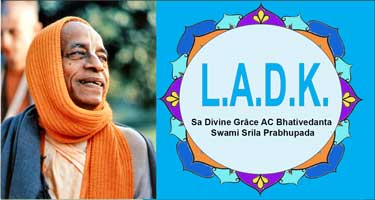
Śrī Caitanya-caritāmṛta, Madhya-līlā 20.318-329
—
New York, December 22, 1966
So in one breathing of Mahā-Viṣṇu, you cannot calculate how many Manus are there. This is called unlimited. We say "unlimited," but we should have some knowledge how it is unlimited. There is no question of counting the energies displayed by the Supreme Lord in so many ways. Because we cannot explain something, we dismiss the whole thing. "There is void, nothing. Void." Because my mind, my intelligence, cannot go so far, we say, "Perhaps, maybe it was like this." So this is all mental speculation. And how we can say? Now, the opposite party may say, "How you can say?" Now, we have got evidence from the Vedic literature. But the other party, they have no evidence. They are simply speculationist. We can give some evidence. The Vedas are accepted by ācāryas, and they are following, and they are getting the result. So therefore, śruti-pramāṇa. Śruti-pramāṇa. There are three kinds of evidences. Out of that, śruti-pramāṇa, evidence from higher authorities, that is the first-class evidence. What are those evidence?
Pratyakṣa, aitihya and śruti. Pratyakṣa means direct perception. Direct perception, that is evidence. People with poor fund of knowledge, they want direct perception of everything. That is not possible. Direct perception of everything is not possible. Therefore aitihya. Aitihya means historical, historical, paramparā, hearing, traditional. And the next first-class evidence is śruti. Śruti means to hear from the authority. That is śruti. Just like the example we have several times cited here that the evidence "Who is my father?" that evidence is to hear from my mother. That's all. There is no other evidence. The mother says that "This is your father. He is your father." This is śruti, hearing from the mother, authority. And we have no other authority to understand father. Similarly, we have to understand our supreme father from the śruti mother, Vedas mother, mother Vedic mother. We have to accept Vedas as mother, śruti. The Vedas are considered as mother, and the Purāṇas are considered as sister. That is explained. So, śruti-pramāṇa, śruti-pramāṇa.

